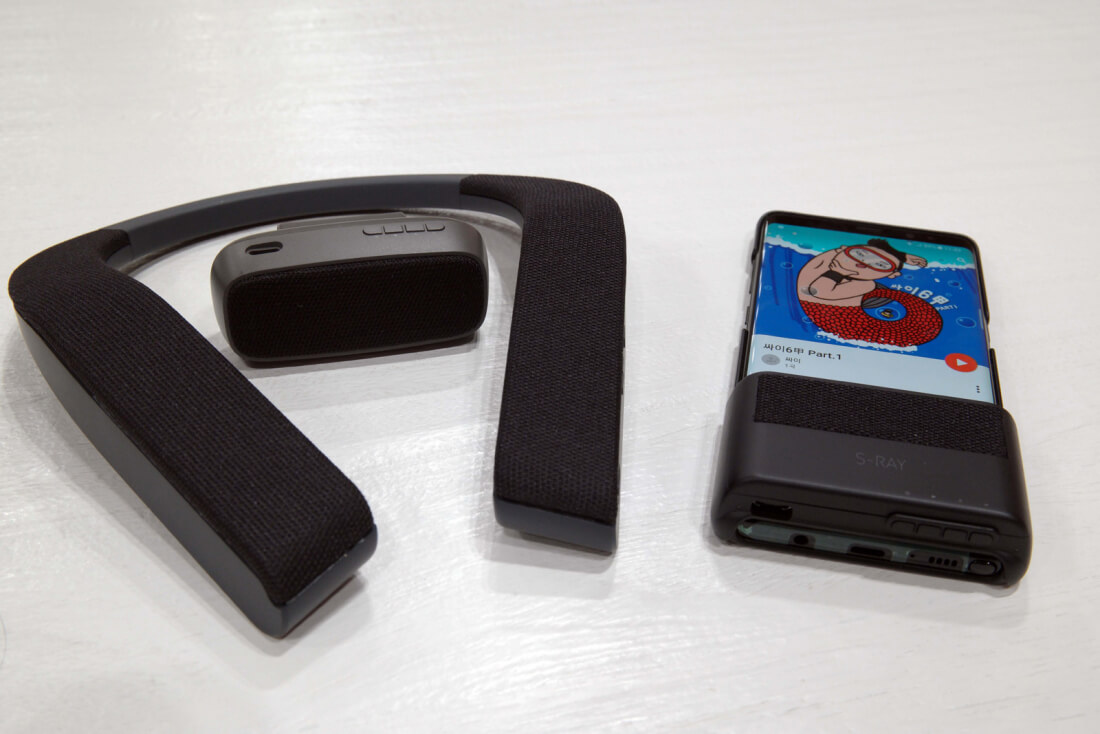Samsung's latest Creative Lab projects are shaping up to be some of their most innovative ideas yet. The projects, which will be shown off at CES next week, include the S-Ray portable directional speaker, the GoBreath lung damage recovery device and a pair of high-tech vision-assisting eye glasses simply called Relúmĭno.
Though their names might be slightly eccentric, these projects seem to be aimed at solving problems people face in their day-to-day lives.
The S-Ray seeks to combine the private sound of a personal pair of headphones with all the advantages conventional, directional speakers can offer. "S-Ray helps people avoid having to put on earphones for a long time which can cause ear pain," Samsung explains, "and avoids the distractions to others Bluetooth speakers can cause."
The idea is based on Samsung's belief that "directional sound" can create a private-enough listening experience that two individuals can enjoy wildly different audio experiences in the same room without ever hearing each other's content.
C-Lab's second project, the GoBreath, is "a recovery solution for people who have experienced lung damage and suffer from postoperative pulmonary complications after general anesthesia." That's quite a mouthful but the gist of the idea is explained in the following video:
At its core, GoBreath is a form of guided breathing therapy. It walks users through breathing exercises to help them regain their maximum lung capacity which can often deteriorate during extended operative anesthesia.
GoBreath will come in the form of a portable device and a paired mobile app that will run patients through basic breathing techniques such as "inspiration, coughing or deep breathing."
C-Lab's final project, the Relúmĭno eye glasses, is perhaps the most ambitious of the trio. Described as "smart visual aid eyeglasses" by Samsung, Relúmĭno glasses will work in tandem with a smartphone, utilizing its batteries and processing power to help users see clearer images while they view objects or read books.
Samsung briefly described the process in their announcement:
"The smartphone processes images from videos projected through the camera of the glasses, and the processed images are floated into the display of the Relúmĭno glasses to help the wearer see things better."
